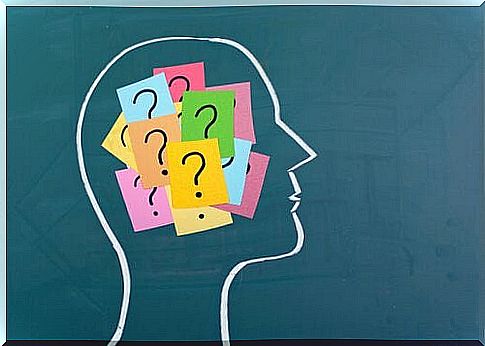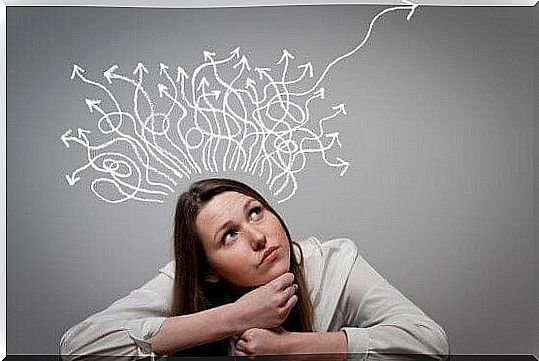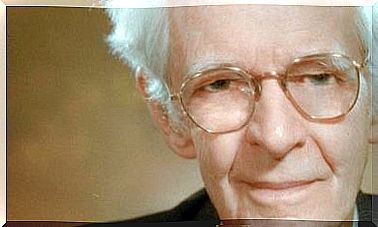What Is Cognitive Restructuring?

What would happen if your sentimental partner abandoned you? Surely you would say this is a terrible thing, but is it really that terrible? How many worse things are there in this world? How many are more terrible than the abandonment of our sentimental partner, or our child failing a subject? You might be wondering why I’m asking these questions. The answer? now let’s talk about cognitive restructuring.
Cognitive restructuring is a technique that focuses on our thoughts. It teaches people to replace those maladaptive thoughts with ones that help them not suffer so much. Therefore, cognitive restructuring is one of the most suggestive cognitive-behavioral techniques within a psychologist’s repertoire. If we change certain thoughts, we will change the emotions associated with them, which will make us feel better.
a thought is a hypothesis
Cognitive restructuring involves the client, with the help of the psychologist, identifying and questioning his maladaptive thoughts. Thus, they will be replaced by more appropriate ones, and will reduce or eliminate the emotional disturbance caused by the former.

In cognitive restructuring, thoughts are considered hypotheses. The therapist and patient work together to gather data to determine whether these hypotheses are correct or helpful. Rather than telling patients what valid alternative thoughts are, the therapist asks a series of questions. He will then plan behavioral experiments for patients to assess and put their negative thoughts to the test.
Finally, patients will come to a conclusion about the validity and usefulness of these thoughts. As we can see, the psychologist or therapist does not impose anything. It is the patient himself who draws his conclusions from the experiences he is carrying out.
Theoretical bases of cognitive restructuring
Cognitive restructuring is based on certain theoretical assumptions. These theoretical assumptions are as follows:
- How people structure their experiences cognitively has a fundamental influence on how they feel and act, as well as the physical reactions they have. In other words, our reaction to a particular event depends mainly on how we see, attend, evaluate and interpret this event.
Imagine that we’ve arranged a date with a person we’ve only recently met. We like her a lot, but it’s been half an hour and she still hasn’t appeared. If our interpretation of this is that she isn’t interested in us, we’ll be sad and we won’t get back in touch with her.
However, if we think that this delay is due to an unforeseen event or a momentary confusion, our emotional and behavioral reaction will be very different. Affection, behavior and physical reactions influence each other and contribute to holding thoughts.
- We can identify people’s thoughts through methods such as interviews, questionnaires and journals. Many of these thoughts are conscious and others are pre-conscious, but the person is able to access them.
- It is possible to change people’s thoughts. This can be used to achieve therapeutic changes.
The ABC model of cognitive restructuring
The cognitive model on which cognitive restructuring is based has been called the ABC model by some authors (eg, Ellis, 1979a). The three letters refer to the following:
- The letter A refers to a situation, event or activating experience in real life. For example, being criticized by a loved one or failing a test.
- The letter B refers to the patient’s appropriate or inappropriate cognitions (thoughts) about the situation (A). Cognitions also refer to cognitive processes. Among them are perception, attention, memory, reflection and interpretation.
The assumptions and beliefs that a person has make it easier for certain errors to occur in the processing of information. Among these errors or failures, we find overgeneralization, filtering, dichotomous thinking, catastrophizing, etc.
- Finally, the letter C refers to the emotional, behavioral and physical consequences of B (cognitions). For example, feeling fear, trembling and running away when interpreting in a threatening way the apparition of an approaching dog barking.
Emotions, behavior and physical reactions influence each other and contribute to maintaining cognitions. In the ABC model, cognitions always precede emotion. However, emotion can exist for a few moments without prior cognitions.
As we can see, according to cognitive restructuring, events are not responsible for our emotional and behavioral reactions. Expectations and interpretations of such events, along with beliefs related to them, would be responsible for the way we feel.









